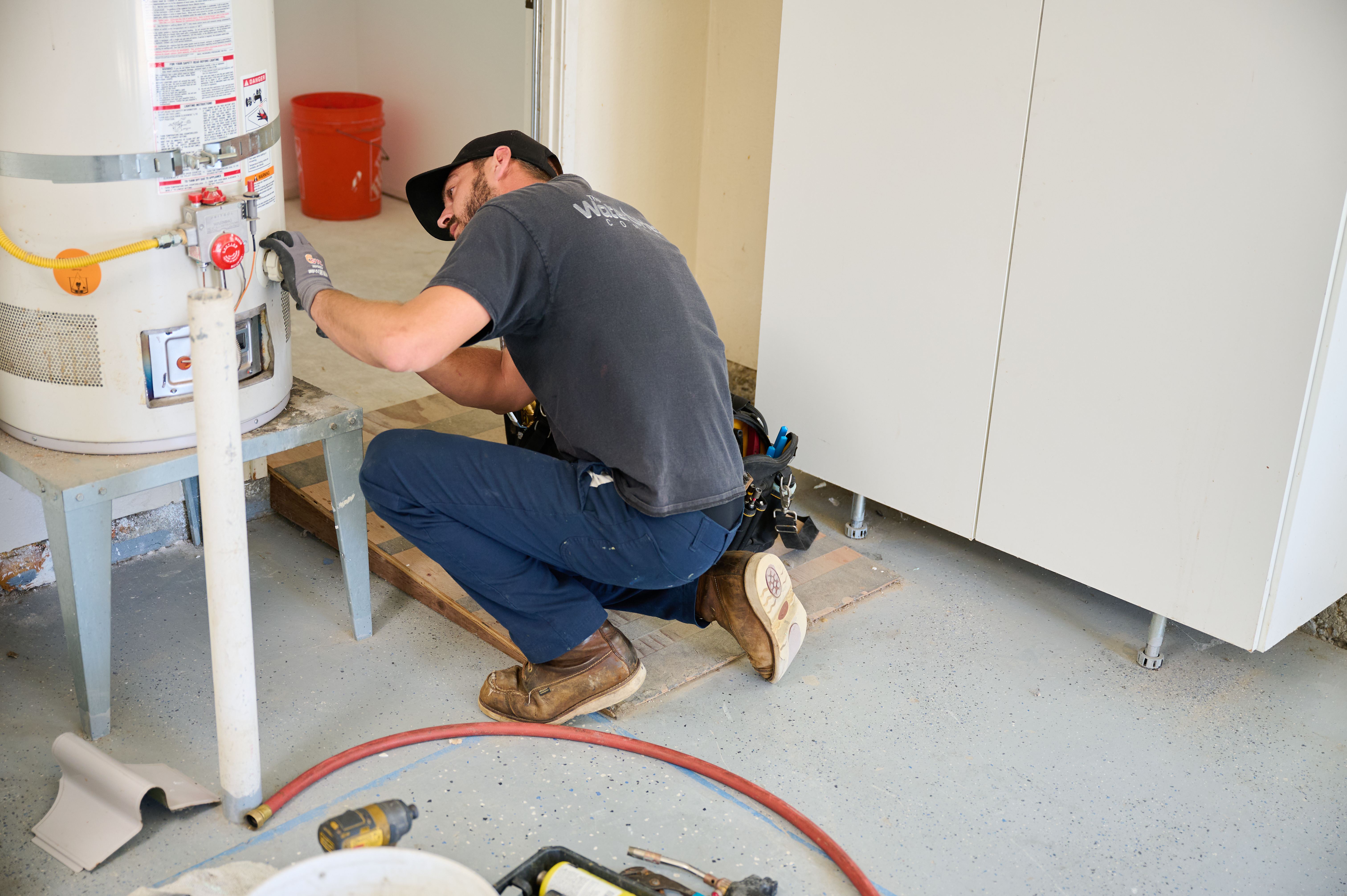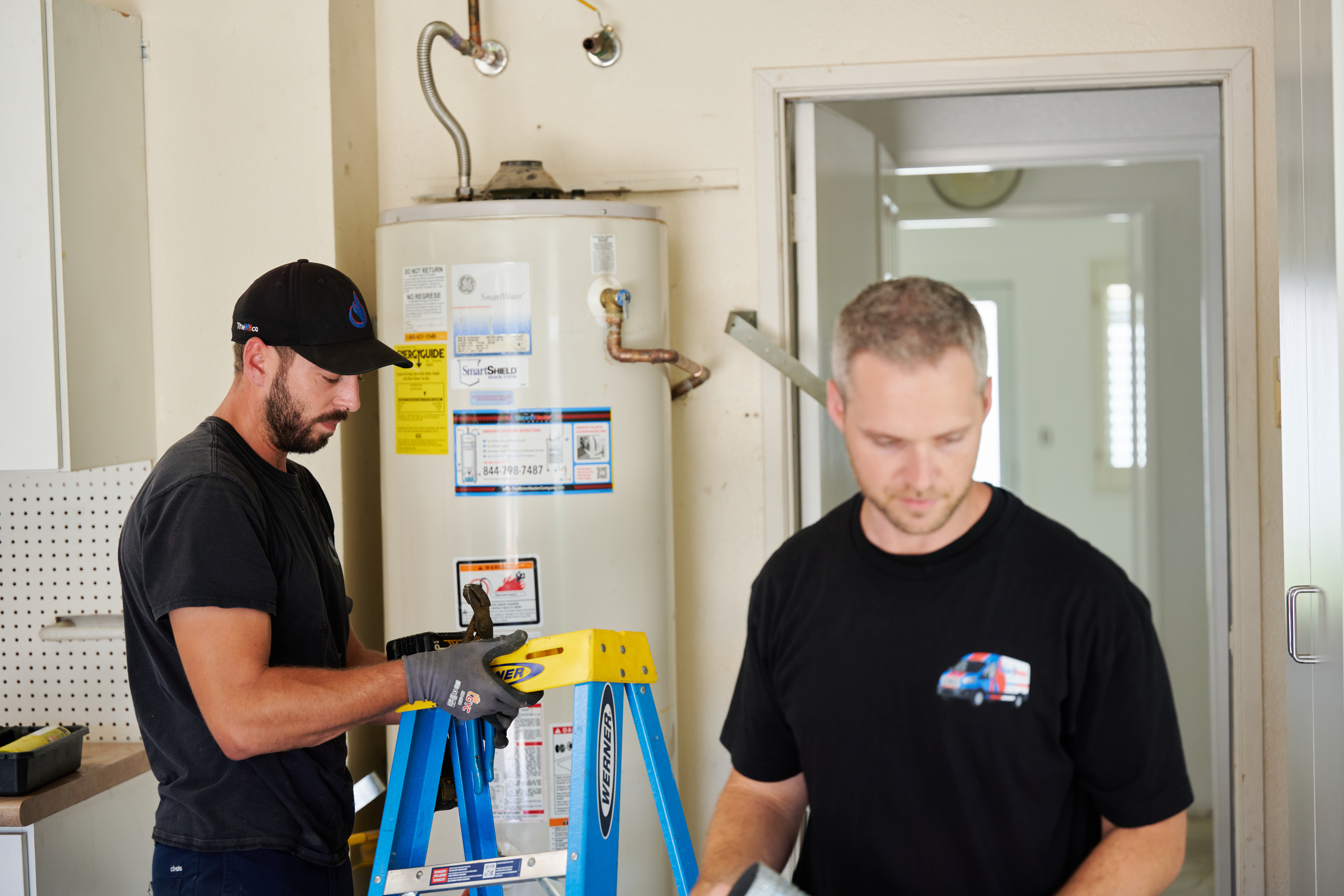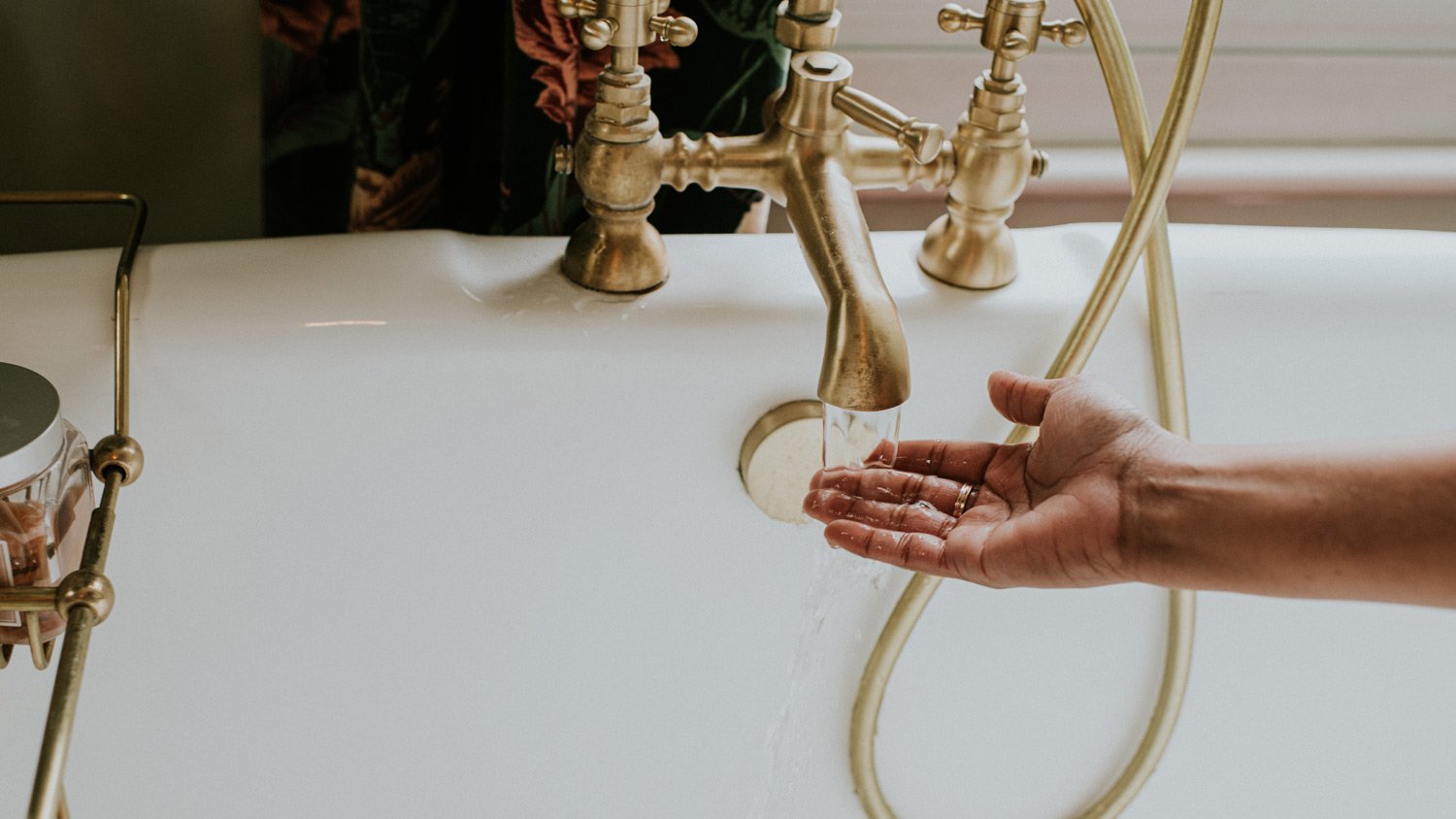
Running out of hot water too quickly or hearing strange noises when you call for hot water? Use this water heater repair cost guide to see what a fix will cost.
What to do when hot water is giving you the cold shoulder


The most common reason your hot water isn’t hot is due to too much use.
An undersized water heater and the wrong temperature setting can cause hot water not to work.
Call your local hot water heater repair specialist when troubleshooting fails to fix the problem.
When your morning shower suddenly turns into an unexpected polar plunge, you need to figure out why your hot water is not working—pronto. Whether you're dealing with a water heater on the fritz or a unit that's just too tiny to keep up with a large household, we've broken down the possible causes of why your faucet and shower are chilly.
If your shower starts with hot water but quickly runs out of hot water, you may be dealing with a classic supply and demand issue. This is especially true if your household has several occupants that use a lot of water, especially all at once.
Since your water heater isn’t to blame, your best way to fix this problem is to be strategic about how and when you use hot water. Consider the tips below to preserve your hot water:
Run the dishwasher in the morning after you shower but before you head to work.
Stagger showers—someone can shower in the mornings while another person showers at night.
Launder clothes with cold water.
Shorten the duration of your showers.
You’ve staggered showers with military precision, limited water use, and run your dishwasher after everyone has showered, and yet, you’re still running out of hot water. A possible reason why you’re still dealing with a lukewarm stream is that your water heater tank is too small. It may be time to upgrade, especially if you’ve renovated your home and added bathrooms.
Start by checking your water heater’s capacity. According to the U.S. Department of Energy, a 50-gallon tank works for one to three adults, while an 80-gallon capacity is often necessary for a three- to four-person home. Larger homes may need to increase capacity by 10 gallons for each person.
If you see that your water heater is too small, you can either upgrade your water heater tank or go with a tankless water heater, which is more efficient at heating water and doesn’t require a giant tank to boot.
Homeowners can decrease their water heater thermostats from 140 to 120 degrees Fahrenheit to save money in hot climates, according to the U.S. Department of Energy. Some choose to lower the setting from late spring to early fall, but when the colder weather returns, those same homeowners may forget to turn the setting back up to at least 130 degrees.
Turn your water heater’s thermostat back to 130 degrees Fahrenheit. Don’t go up to the top temperature of 140 degrees as it could lead to scalding. Once you’ve increased the temperature setting, you should feel the water warm up.
A simple yet often overlooked reason behind having no hot water in the house is a tripped circuit breaker. A tripped breaker means your water heater can’t turn on in the first place, leading to an ever-constant, cold tap.
Check the breaker box switch. If it is in the off mode, flip the switch back on, and see if your water heater starts to heat the water. A breaker that continues to trip needs attention from a professional electrician near you. This annoying issue could indicate your electrical system has other problems.
The average lifespan of a hot water heater is eight years, though the range is somewhere between five and 20 years. If your water heater is showing signs of distress, it may be time to have it inspected,repaired, or possibly replaced.
In most cases, you’ll need a local water heater repair pro to inspect your water heater, as there can be many causes for a malfunctioning water heater. A few common problems with water heaters include:
Your water heater is leaking.
The thermostat isn’t functioning properly.
You have a faulty heating element.
Sediment buildup inside your water heater tank is corroding the inner lining.
An old water heater is not the type of antique you want to keep around. If your unit is more than eight years old and has constant issues or struggles to keep up with hot water demand in your home, there’s a good chance the water heater has outlived its lifespan.
You’ve cut back on your hot water usage, confirmed you have the right size water heater, checked the heater’s temperature settings, and have no other issues with your electrical or water heater systems—but your hot water is not working. Now is the time to call your local water heater repair specialist, who can take a closer look at your water heater and not only identify the problem but also present a solution that will get you back a comfortable temperature in no time.
From average costs to expert advice, get all the answers you need to get your job done.

Running out of hot water too quickly or hearing strange noises when you call for hot water? Use this water heater repair cost guide to see what a fix will cost.

Tankless water heater costs depend on the size of your water heater, location, fuel type, and more. Keep reading to calculate your expenses.

Learn about the different factors that go into water heater gas valve replacement costs to see if you should DIY the project or call a pro.

There are many parts of a hot water heater. The type you need to deal with depends on your water heater. Here's what each part does.

Discover all the tankless water heater pros and cons you should know. Learn how these energy-efficient systems can save you money and space while considering their limitations.

How long does an electric water heater last? We’re breaking down what you need to know about electric water heater longevity. Read on to learn more.